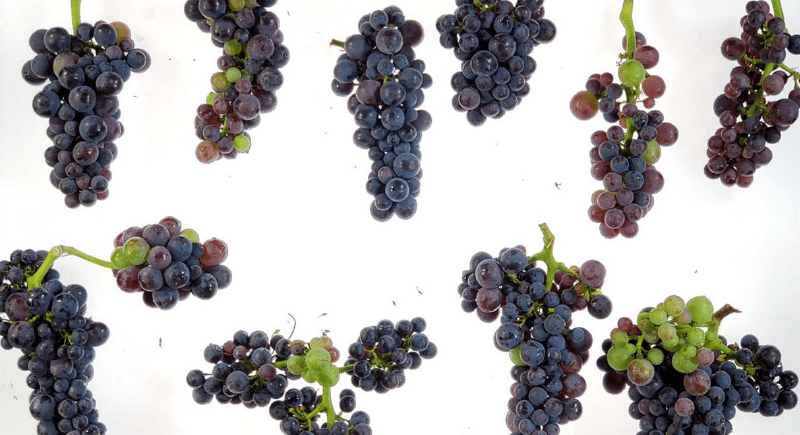
December 21, 2020 WSU researchers studying spread of red blotch virus in vineyards
Grapevine red blotch disease spreads through vineyards and blotches leaves, shrinking wine and juice grape harvests.
Researchers at WSU’s Ste. Michelle Wine Estates Wine Science Center are studying how and why the grapevine red blotch virus, which causes the disease, spreads.
“We’re interested in finding out how the grapevines respond to the virus,” said Bhaskar Bondada, WSU associate professor.
Grape leaves work like solar panels, using sunlight to convert sugar into energy that fuels grape production.
Because leaves become less active when grapevines contract the red blotch virus, less sugar is moved through the plant, causing grapes to fade and grow more slowly. The virus also adversely affects pH, tannin levels, and other flavor characteristics of the fruit, and the final wine.
While virologists study the virus itself, Bondada, a physiologist, is interested in how the physical symptoms of the disease manifest on the plant.
“I’m studying what the symptoms look like in the plant on the cellular level, and how the virus spreads throughout the vine and the vineyard,” he said.

Research team member and WSU Viticulture & Enology graduate student Bailey Hallwachs took samples from multiple vineyards throughout Oregon and Washington over the summer, and is currently processing fruit and plant tissues samples at the Franceschi Microscopy and Imaging Center in Pullman. She uses microscopes to observe grapevine plant cells affected by the virus.
During the six years between her undergraduate and graduate studies, Hallwachs worked as an interior horticulturist at the Cheyenne Botanic Gardens, teaching gardening classes and managing the community gardens.
“Consistently, the issues we faced in production on a horticulture level were insects and diseases,” she said. “I wanted to get my graduate degree at WSU to understand the science behind solving major issues in agriculture so I could be part of the solution.”
The three-cornered alfalfa treehopper, a small green teardrop shaped insect, is the only confirmed insect to transmit the virus to the grapevine plant. There is currently no solution for treating grapevines infected with red blotch virus, aside from removing and replacing affected vines.
WSU’s research in red blotch virus is in partnership with Oregon State University. Field researchers at OSU provide the plant tissues and fruit, which are then analyzed at the WSU Wine Science Center.
“Our OSU partners are doing research in the field, and we are doing research at the physiological level,” Bondada said. “Once we have the data for them, we can develop more strategies to control the spread of the red blotch virus.” Research for this project is funded by the Oregon Wine Board and began in the spring. Bondada and Hallwachs intend to share their research in the new year.





